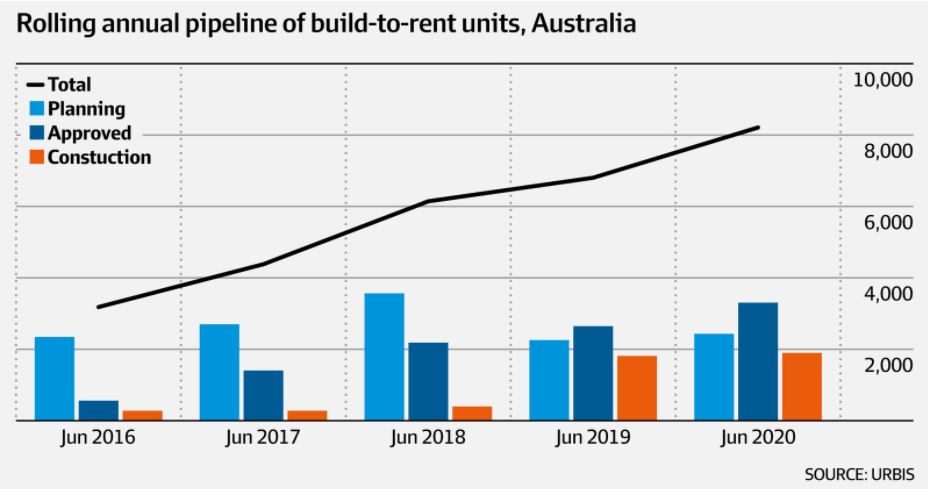The sharp slowdown in private housing development gives Australia an opportunity to expand the small but fast-growing build-to-rent asset class, consultancy Urbis said, as it presented figures showing new apartment project launches halved in the June quarter.
New apartment project launches totalled 23 nationally in the June quarter, down from 60 in the same period a year ago. There were just 55 launches in the first half, putting the country on track this year to record half of last year’s total 199 launches, itself half of the 2015-2018 average of 407 projects, the consultancy’s Q2 Apartment Essentials Report shows.
But the report also shows the pick-up in build-to-rent accommodation. In the year to June, 3305 BTR units were approved nationally and 1895 built, up from the 2645 approved and the 1812 constructed a year earlier. The sector was growing and now was a good time to push it harder to ease the country’s housing shortfall, Urbis director Mark Dawson said.

